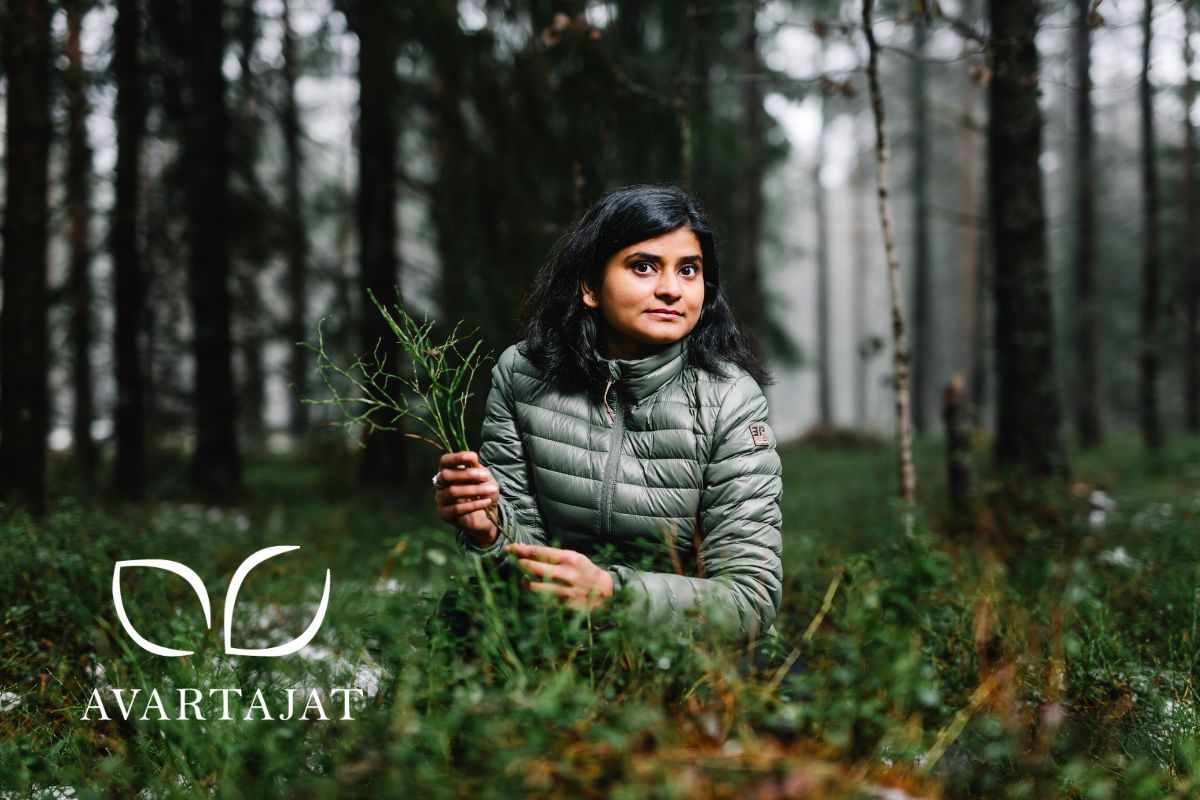Priyanka Trivedi studies the surface waxes of wild Nordic berries. Together with the cosmetics company Lumene she has explored the potential of using the Nordic berry industry’s side streams in cosmetics.
“Today’s consumers are increasingly aware of the harmful side effects of chemical substances in their daily products. Consumers are more and more inclined towards natural ingredients, especially in cosmetics. Cosmetics commonly include beeswax, candelilla wax, and carnauba wax, which are used in sunscreens and mascaras, among others.
Yet approximately only 3% of the wax used industrially comes from natural sources – the remaining 97% is fossil-based. As compared to fossil-based sources, plant natural waxes are synthesized biologically, which makes them renewable and more sustainable. The demand for natural wax is increasing for applications such as food packaging and cosmetics. This is where my research steps into the picture.
I’m currently researching cuticular waxes of wild Nordic berries. Cuticular waxes, or surface waxes, are found on all aerial parts of plants, including fruits. They can be seen with the naked eye: you would have seen a glossy covering on the surface of an apple or a whitish surface on bilberries. These waxes protect the plants against water loss and ultraviolet radiation, among others.
Following insights from my doctoral research at the University of Oulu, my colleagues and I realized that there could be commercial potential in wild berry waxes. The leftovers of bilberry and lingonberry juice industry served as a source for the extraction of waxes. Thanks to the PoDoCo program, I got the opportunity to collaborate with the Finnish cosmetic company Lumene in establishing berry waxes in cosmetic formulations.
There are approximately 50 wild berry species in Nordic countries. Out of these 50 more than 30 species are edible. It is estimated that every year, hundreds of tons of these berries are available – but only 5% are picked up. The rest is left to rot in the forests. Our wax project will contribute to enhancing bio-economy and circular economy, as we will explore the potential of utilizing the side streams of the Nordic industry of berry-based products.
“I’d like to think of my work as a blueprint for how to best harness natural resources.”
My research is not just a proof of concept; it aspires to develop tangible commercial solutions and make them available to consumers in the coming years. I’d like to think of my work as a blueprint for how to best harness natural resources. Given the current crises of global warming, biodiversity loss, and the scarcity of natural resources, we must be mindful of utilizing leftover raw materials while creating additional value. My work continues at Lumene as a part of a Business Finland Co-innovation project, BIO4P.”

What should be studied next in your field?
“Nature’s reserve of health-beneficial compounds in fruit peels also needs to be explored further. In addition to berry peels, I’ve previously studied for example banana and citrus fruit peels. You might have heard the phrases “An apple a day keeps the doctor away”, or “Let food be your medicine”. I’m a strong advocate for this way of thinking.
Next, it would be interesting to look into how plants release waxes on their surface and gain more understanding of the science behind the process. From a business perspective, we will assess the efficacy and safety of berry waxes on human skin.”
What or who has recently expanded your mind in your field of research?
“Recently, I have expanded my research focus on the structure and physiology of human skin. Before this, I was focused on plant cuticles (that is, plant skin or outer covering). The thought of studying the effect of plant waxes on human skin has been very interesting for me.”
If funding wasn’t an issue, what would be your dream research project?
“Well, if funding wasn’t an issue, I’d love to do a large study where we take a close look at the waxy coatings on different plants. We’d try to figure out how the environment and genetics affect what’s in those waxy coatings and what they do for plants.”
Read more about Post Docs in Companies (PoDoCo) program
Priyanka Trivedi’s research project was funded by Eeva-Liisa Hirvisalo special fund, which awards grants for research in the sustainable commercial and technical utilization of Finland’s natural resources.
Photos: Antti J. Leinonen
